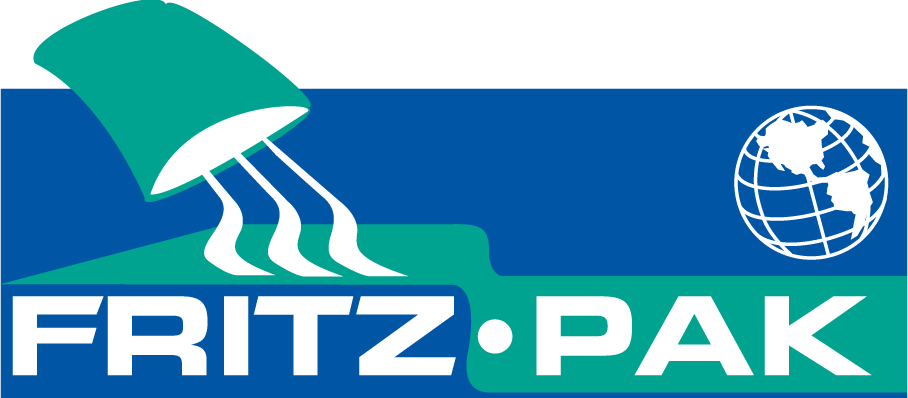|
By THE ASSOCIATED PRESS
Published: August 11, 2007
WASHINGTON, Aug. 10 (AP) — The Federal Reserve, trying to calm turmoil on Wall Street, announced today that it will pump as much money as needed into the financial system to help overcome the ill effects of a spreading credit crunch.
The Fed, in a short statement, said it will provide “reserves as necessary” to help the markets safely make their way. The central bank did not provide details but said it would do all it can to “facilitate the orderly functioning of financial markets.”
The Fed pushed $35 billion in temporary reserves into the system this morning, on top of a similar move the day before.
Financial markets in the United States and around the globe have been shaken by fears about spreading credit problems that started with home mortgages for those with tarnished credit histories. Investors are worried that these problems will infect the larger financial system and possibly hurt the American economy.
The Fed’s action may have eased some investors’ anxieties today, with the Dow Jones industrial average down 99 points in late-morning trading after suffering a much larger drop near the start of the session.
The current financial turmoil provides the biggest test yet to the Fed chairman, Ben S. Bernanke, who took the helm last year.
The Fed’s action comes one day after a financial panic about a credit crunch swept through Europe. That prompted the Europeans to pump $130 billion into their financial system. The Fed moved Thursday to add an extra $24 billion in temporary reserves to the American banking system. But that wasn’t enough to comfort Wall Street, which suffered its second-worst decline of the year that day.
The Fed today chose not to cut a key interest rate, called the federal funds rate, to address the problem. That interest rate still stands at 5.25 percent. The funds rate is interest banks charge each other on overnight loans and is the Fed’s main lever to influence economic activity.
Instead, the Fed is seeking to provide reassurance to investors that the central bank will plow extra money into the U.S. financial system to make sure the credit crunch doesn’t worsen.
The Federal Reserve Bank of New York, which carries out the central bank’s market operation, moved to add $19 billion in temporary reserves this morning. A couple of hours later, it added another $16 billion in reserves.
“In current circumstances, depository institutions may experience unusual funding needs because of dislocations in money and credit markets,” the Federal Reserve in Washington said in its statement.
It told banks that the Fed’s discount window — where banks can turn in an emergency for short-term loans — is available as a source of funding.
After the Sept. 11, 2001, terror attacks, the Fed used the discount window to extend billions of dollars worth of emergency loans to banks to keep the financial system functioning.
The current meltdown in the housing and mortgage markets has caused new home foreclosures to climb to record highs and has forced some lenders out of business. Problems first sprouted in the market for higher-risk or “subprime” mortgages, which are held by people with poor credit or low incomes. But some problems have spilled over to more creditworthy borrowers. That has led to tighter lending standards, making credit harder to get for people and businesses.
The free flow of credit is important to the smooth functioning of the national economy. Increasingly restrictive lending conditions can put a damper on people’s ability to buy big-ticket items such as homes, cars and appliances. And it can crimp businesses’ capital investment and hiring. That reduced appetite by businesses and consumers would slow overall economic activity.
Against this backdrop, Wall Street has careened wildly in recent weeks.
Bernanke and his central bank colleagues, in a meeting on Tuesday, acknowledged that these problems are posing increasing risks to the economy. But they refrained from cutting interest rates and stuck to their forecast that the economy will weather the financial storm and grow gradually in the coming months.
“Financial markets have been volatile in recent weeks, credit conditions have become tighter for some households and businesses and the housing correction is ongoing,” the Fed said on Tuesday, its first acknowledgment of the conditions shaking Wall Street and Main Street. “Downside risks to growth have increased somewhat.”
One day later, President Bush struck a reassuring tone about the turbulence on Wall Street, saying he believes the markets will achieve a “soft landing.” The market ended Wednesday up by 154 points, but then went into its nosedive on Thursday.
|
|
where do you think Concrete Pumping fits into this....Risk and reward...prices need to go up 20-40% across board...IMHO
The end of the credit party
The once-endless stream of cheap credit is starting to dry up; buyouts, corporate deals take a hit.
By Grace Wong, CNNMoney.com staff writer
July 27 2007: 11:35 AM EDT
LONDON (CNNMoney.com) -- Dealmakers, investors and home owners in the United States are facing a grim summer as conditions for borrowers get worse.
Until recently, there has been a seemingly unlimited supply of cheap money to fuel leveraged buyouts and other takeovers. There was also an easy flow of mortgage money available before the housing market turned south and the crisis erupted in subprime mortgages made to borrowers with poor credit.
|
|
|
A trader reacts to Thursday's selloff on Wall Street, where credit concerns sent the Dow industrials tumbling 311 points, the 2nd biggest loss of the year. |
But now investors are showing a greater disdain for risky debt - and fears about a looming credit crunch have shaken investor confidence worldwide. The Dow Jones industrial average plunged 311 points Thursday - its second-worst day of the year - and sent global stock markets reeling. The Dow opened lower Friday as well but later stabilized and was little changed in mid-morning.
Besides triggering a global stock selloff, the jitters are casting a shadow on the buyout boom and could slow down everything from private equity deals to corporate restructuring plans.
Housing slump gets longer, and longer ...
The housing market, meanwhile, is still struggling to find a bottom. The subprime meltdown started the worries in credit markets - and the extent of the problems in the subprime mortgage market remains uncertain.
"The ultimate outcome of the decline in mortgage credit quality is not wholly predictable," Moody's Economy.com said in a July 26 report. While there are efforts being made to forestall the surge in foreclosures, "the downside risks outweigh the positives," the report said.
Credit markets have been roiled as investors have begun shying away from risk, demanding better terms on corporate bonds and loans, meaning the old days of cheap, easy money for corporations may be past.
"This is part of a process of removing liquidity and increasing the expected returns required of people to tolerate risk," Charles Diebel, an analyst at Nomura International, said about the turbulence in the market.
Tighter credit is troubling to investors for two reasons. It's likely to slow the buyout boom that's helped prop up stock prices. And it could raise the cost of borrowing for companies, hurting corporate earnings. To date, there have been roughly 20 buyout-related debt deals that have been postponed as credit markets have tightened.
The battle to be 'King of the Street'
Earlier this week, Chrysler delayed a debt sale related to its takeover by Cerberus Capital Management. The sale of $12 billion in loans underwritten by JP Morgan (Charts, Fortune 500), Bear Stearns (Charts, Fortune 500), Goldman Sachs (Charts, Fortune 500), Citigroup (Charts, Fortune 500) and Morgan Stanley (Charts, Fortune 500) was put on hold, according to Reuters Loan Pricing Corp. - although Cerberus said its purchase of Chrysler would still be completed in August.
The wave of credit worries is also upsetting corporate plans in
Europe. British pharmacy giant Alliance Boots, which is being taken over by Kohlberg Kravis Roberts and an Alliance executive, ran into trouble financing its buyout earlier this week.
Britain's Cadbury Schweppes said Friday it's delaying the sale of its beverage unit because of troubles in the debt markets. The company said it pushed back the timetable of the sale "to allow bidders to complete their proposals against a more stable debt financing market."
Now there are concerns the darkening mood in the debt market could hit other big deals in the pipeline. A number of high-profile buyouts still need to be financed, including the $28 billion purchase of wireless phone company Alltel (Charts, Fortune 500) and the $44 billion takeover of Texas utility TXU Corp (Charts, Fortune 500).
"Clearly, deals will get done. But capacity again has become an issue. Syndicating a $5 billion loan once again seems daunting, arrangers say, to speak nothing of a $10-15 billion credit," Standard & Poor's Leveraged Commentary & Data said in a note Thursday.
If financing for buyout firms dries up, overall deal activity would be hit hard. Private equity firms have announced about $782 billion in deals this year, or about a quarter of worldwide deal activity, according to Thomson Financial.
The weak conditions also come when buyout firms may start crowding the exit doors, which would make it more difficult for other deals coming along.
Given the length of the current merger wave, which started in 2003, the M&A market is already ripe for a drop off, according to Scott Moeller, a visiting professor of finance at Cass Business School.
"At some point, this market will go down, and because of the way liquidity has driven this merger wave, when we have the fall - it's going to be steeper, and the drop is likely going to be faster than in the past," he said.
Private equity firms typically hold their investments for three to five years. The question now is will they be forced to start unloading the firms scooped up in the recent buying spree sooner than they had wanted.
It remains to be seen what will trigger the selling wave among private equity firms, but when liquidity starts to dry up, "everyone is going to rush to the exits," Moeller said.
|
|
Foreclosure rates for top 100 metro areas.
| 1 |
STOCKTON, CA |
8,169 |
27 |
256 |
| 2 |
DETROIT/LIVONIA/DEARBORN, MI |
28,705 |
29 |
99 |
| 3 |
LAS VEGAS/PARADISE, NV |
22,928 |
31 |
142 |
| 4 |
RIVERSIDE/SAN BERNARDINO, CA |
41,351 |
33 |
198 |
| 5 |
SACRAMENTO, CA |
20,516 |
36 |
241 |
| 6 |
DENVER/AURORA, CO |
23,842 |
42 |
11 |
| 7 |
MIAMI, FL |
20,275 |
46 |
74 |
| 8 |
BAKERSFIELD, CA |
5,365 |
47 |
222 |
| 9 |
MEMPHIS, TN |
10,800 |
49 |
17 |
| 10 |
CLEVELAND/LORAIN/ELYRIA/MENTOR, OH |
18,844 |
50 |
106 |
| 11 |
FORT LAUDERDALE, FL |
15,720 |
50 |
72 |
| 12 |
ATLANTA/SANDY SPRINGS/MARIETTA, GA |
36,502 |
54 |
17 |
| 13 |
FORT WORTH/ARLINGTON, TX |
13,221 |
57 |
-10 |
| 14 |
FRESNO, CA |
4,867 |
60 |
183 |
| 15 |
INDIANAPOLIS, IN |
11,677 |
62 |
-6 |
| 16 |
DAYTON, OH |
5,966 |
63 |
96 |
| 17 |
DALLAS, TX |
23,284 |
65 |
-15 |
| 18 |
AKRON, OH |
4,378 |
70 |
85 |
| 19 |
OAKLAND, CA |
13,482 |
70 |
152 |
| 20 |
COLUMBUS, OH |
10,706 |
70 |
85 |
| 21 |
JACKSONVILLE, FL |
7,513 |
73 |
20 |
| 22 |
PHOENIX/MESA, AZ |
21,378 |
74 |
139 |
| 23 |
SAN DIEGO, CA |
14,859 |
75 |
164 |
| 24 |
TAMPA/ST PETERSBURGH/CLEARWATER, FL |
15,905 |
79 |
68 |
| 25 |
WARREN/FARMINGTON HILLS/TROY, MI |
13,093 |
80 |
92 |
| 26 |
TOLEDO, OH |
3,530 |
84 |
47 |
| 27 |
VENTURA, CA |
3,100 |
86 |
183 |
| 28 |
NEWHAVEN/MILFORD, CT |
4,017 |
86 |
547 |
| 29 |
LOS ANGELES/LONG BEACH, CA |
38,199 |
87 |
125 |
| 30 |
CHICAGO, IL |
34,818 |
88 |
45 |
| 31 |
SARASOTA/BRADENTON/VENICE, FL |
3,919 |
94 |
166 |
| 32 |
EDISON, NJ |
9,462 |
98 |
58 |
| 33 |
ORLANDO, FL |
8,325 |
98 |
49 |
| 34 |
CINCINNATI, OH |
8,949 |
100 |
166 |
| 35 |
WORCESTER, MA |
3,097 |
101 |
374 |
| 36 |
LAKE/KENOSHA, IL-WI |
2,454 |
101 |
27 |
| 37 |
CAMDEN, NJ |
2,761 |
101 |
56 |
| 38 |
CHARLOTTE/GASTONIA, NC |
6,498 |
101 |
116 |
| 39 |
PALM BEACH, FL |
6,063 |
102 |
32 |
| 40 |
GARY, IN |
2,614 |
108 |
49 |
| 41 |
LITTLE ROCK/NORTH LITTLE ROCK, AR |
2,617 |
108 |
-39 |
| 42 |
KANSAS CITY, MO-KS |
7,703 |
111 |
117 |
| 43 |
SAN ANTONIO, TX |
6,409 |
112 |
-1 |
| 44 |
HARTFORD, CT |
4,326 |
112 |
446 |
| 45 |
ORANGE, CA |
9,012 |
113 |
153 |
| 46 |
AUSTIN/ROUND ROCK, TX |
5,155 |
115 |
-21 |
| 47 |
SPRINGFIELD, MA |
2,424 |
116 |
234 |
| 48 |
BRIDGEPORT/STAMFORD/NORWALK, CT |
2,847 |
122 |
552 |
| 49 |
TUCSON, AZ |
3,323 |
122 |
55 |
| 50 |
NEWARK, NJ |
6,745 |
124 |
20 |
| 51 |
TACOMA, WA |
2,427 |
125 |
23 |
| 52 |
HOUSTON/BAYTOWN/SUGARLAND, TX |
16,057 |
127 |
1 |
| 53 |
ESSEX, MA |
2,179 |
135 |
409 |
| 54 |
OKLAHOMA CITY, OK |
3,660 |
138 |
-22 |
| 55 |
TULSA, OK |
2,712 |
143 |
-12 |
| 56 |
SAN JOSE/SUNNYVALE/SANTA CLARA, CA |
4,197 |
148 |
105 |
| 57 |
SUFFOLK/NASSAU, NY |
6,624 |
150 |
17 |
| 58 |
ST LOUIS, MO-IL |
8,023 |
151 |
55 |
| 59 |
BOSTON/QUINCY, MA |
4,862 |
153 |
342 |
| 60 |
RALEIGH/CARY, NC |
2,505 |
158 |
105 |
| 61 |
NASHVILLE/DAVIDSON, TN |
3,788 |
161 |
31 |
| 62 |
LOUISVILLE, KY |
3,150 |
169 |
7 |
| 63 |
SALT LAKE CITY, UT |
2,185 |
172 |
-39 |
| 64 |
EL PASO, TX |
1,306 |
187 |
-2 |
| 65 |
CAMBRIDGE/NEWTON/FRAMINGHAM, MA |
3,045 |
193 |
313 |
| 66 |
WASHINGTON/ARLINGTON/ALEXANDRIA, DC-VA-MD |
8,483 |
195 |
430 |
| 67 |
PHILADALPHIA, PA |
8,086 |
198 |
2 |
| 68 |
ALBUQUERQUE, NM |
1,635 |
208 |
-38 |
| 69 |
ROCHESTER, NY |
2,041 |
215 |
208 |
| 70 |
GREENSBORO/HIGHPOINT, NC |
1,336 |
225 |
75 |
| 71 |
BIRMINGHAM/HOOVER, AL |
1,986 |
227 |
157 |
| 72 |
OMAHA/COUNCIL BLUFFS, NE-IA |
1,480 |
229 |
158 |
| 73 |
MILWAUKEE/WAUKESHA/WST ALLIS, WI |
2,782 |
231 |
22 |
| 74 |
SCRANTON/WILKES/BARRE/HAZLETON, PA |
1,076 |
239 |
110 |
| 75 |
MINNEAPOLIS/ST PAUL/BLOOMINGTON, MN |
5,270 |
245 |
201 |
| 76 |
SEATTLE/BELLEVUE/EVERETT, WA |
4,302 |
246 |
7 |
| 77 |
KNOXVILLE, TN |
1,211 |
246 |
9 |
| 78 |
SAN FRANCISCO, CA |
2,765 |
263 |
83 |
| 79 |
NEW ORLEANS, LA |
2,178 |
267 |
610 |
| 80 |
PITTSBURGH, PA |
3,917 |
281 |
-22 |
| 81 |
PROVIDENCE/NEW BEDFORD, RI |
1,489 |
301 |
473 |
| 82 |
NEW YORK/WAYNE/WHITE PLAINS, NY |
14,300 |
305 |
47 |
| 83 |
BUFFALO/CHEEKTOWAGA/TONAWANDA, NY |
1,565 |
332 |
76 |
| 84 |
PORTLAND/VANCOUVER/BEAVERTON, OR |
2,426 |
353 |
7 |
| 85 |
BETHESDA/FREDERICK/GAITHERSBURG, MD |
1,196 |
368 |
581 |
| 86 |
BALTIMORE/TOWSON, MD |
2,816 |
387 |
275 |
| 87 |
WICHITA, KS |
633 |
399 |
0 |
| 88 |
POUGHKEEPSIE/NEWBURGH/MIDDLETOWN, NY |
566 |
428 |
2 |
| 89 |
ALBANY/SCHENECTADY/TROY, NY |
690 |
544 |
82 |
| 90 |
CHARLESTON, SC |
483 |
547 |
-23 |
| 91 |
WILMINGTON, DE |
469 |
588 |
108 |
| 92 |
SYRACUSE, NY |
441 |
643 |
3 |
| 93 |
BATON ROUGE, LA |
456 |
668 |
265 |
| 94 |
ALLENTOWN/BETHLEHEM/EASTON, PA |
403 |
756 |
34 |
| 95 |
COLUMBIA, SC |
392 |
757 |
-49 |
| 96 |
NORFOLK/VIRGINIA BEACH/NEWPORT NEWS, VA |
747 |
787 |
191 |
| 97 |
HONOLULU, HI |
286 |
1,151 |
68 |
| 98 |
MCALLEN/EDINBURG/PHARR, TX |
155 |
1,494 |
-35 |
| 99 |
GREENVILLE, SC |
151 |
1,721 |
-66 |
| 100 |
RICHMOND, VA |
213 |
2,319 |
-1 |
|





















.jpg)
.gif)

.jpg)









.jpg)








